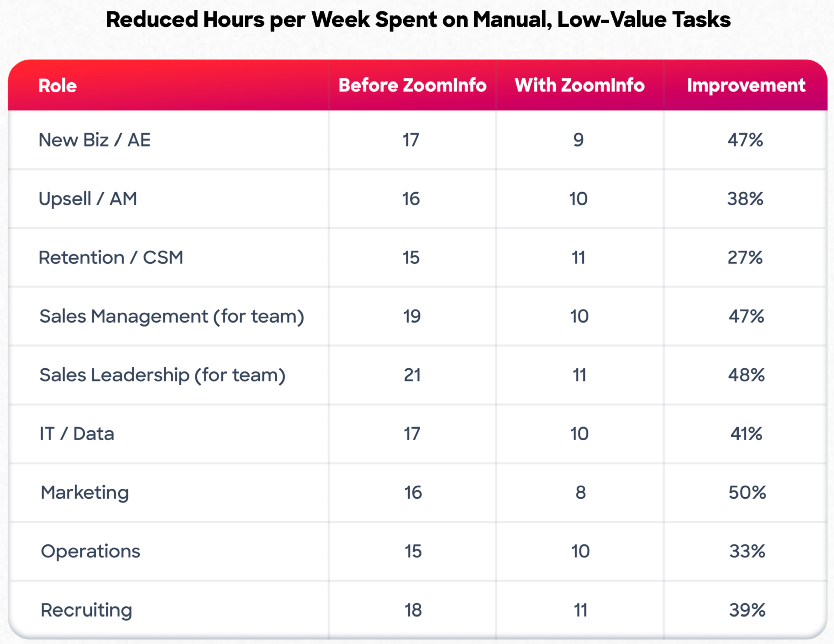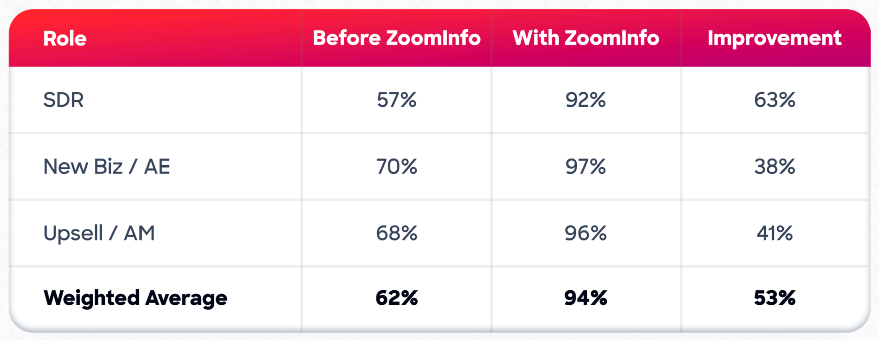With businesses in nearly every sector facing complex economic challenges, efficiency and effectiveness are once again watchwords in boardrooms and corner offices. And for revenue leaders, that means the tug-of-war between sales capacity and quota attainment is perhaps more important than ever.
In the past, many companies viewed their go-to-market (GTM) motions primarily through the lens of labor, which meant that hiring more sales reps — also known as increasing sales capacity — was their key growth mechanism. But today, that approach offers uncertain returns and considerable risks.
While a larger sales team can be an asset, it’s also one of the biggest expenses for companies already facing pressure to mitigate costs. And in an era of increasingly informed, empowered, cost-conscious buyers, a larger sales team simply can’t cover for a lack of efficiency and integration across the GTM function.
“Our fundamental belief is we have exited the era of growth through sales capacity, and we are now in the era of commercial productivity,” Bain & Co. partner Jordan Lee said at a recent ZoomInfo event.
The bottom line? Instead of seeing sales as purely a problem of capacity, sales leaders should focus on the other half of the equation: quota attainment.
Sales Capacity vs. Quota Attainment: a Matter of Priorities
One of the biggest problems with prioritizing for sales capacity is the underlying assumption that all members of a sales team are of similar aptitude.
According to Hussam AlMukhtar, ZoomInfo’s senior director of customer expansion, the problem is driven at least partly by shifts in attitude among sales leaders.
“Sales capacity compared to attainment is essentially the equation of scale. In a way, it’s a ‘new world vs. old world’ situation,” AlMukhtar says. “Tech companies would typically approach hiring from a mathematical perspective — in order to reach $1 million in revenue, if a rep has a capacity of producing $30,000 per year, then they divide 1 million by 30,000.”
The major flaw with this approach is that it ignores quota attainment. If the rep hired to hit any given revenue target has a quota attainment of 50%, the talent acquisition manager would have to effectively double their hiring budget to achieve that revenue goal.
So how should sales leaders evaluate and measure quota attainment?
Quota Attainment: the Other Side of the Equation
Calculating a salesperson’s quota attainment can be part art, part science.
“Understanding pain points, having a strong grasp of the persona you’re talking to, recognizing potential objections — there are all sorts of variables that affect sales capacity,” AlMukhtar says. “The attainment part is relatively arbitrary. It’s typically assigned based on years of experience and previous performance.”
Irrespective of how sales leaders calculate quota attainment, recent economic difficulties have prompted many companies to reassess how they evaluate incoming sales hires and the performance of their existing teams.
In his conversations with venture capitalists and private equity firms, AlMukhtar says he has noticed a definite shift in how investors are viewing the sales motions of their portfolio companies.
“Investors are looking at sales from an economical perspective,” AlMukhtar says. “They’re seeing their portfolios moving from a direction in which their investments were pushed to scale, but are now being pushed to reach profitability.”
One reason for this renewed focus on performance and revenue has been the shift in how many businesses are recruiting and evaluating salespeople. In the past, raw capacity was still a major factor in how many companies hired. Now, according to AlMukhtar, some companies are setting lower individual targets for reps, with the explicit expectation that reps must hit that number in order to drive sustainable growth and ensure stability in sales forecasting.
Quota Attainment: Setting Sales Teams Up for Success
Given that quota attainment is more important than ever, it’s vital that sales leaders do everything in their power to help their teams unlock insights, engage customers, and win faster.
Reduce the cognitive burden of context switching
As noted in ZoomInfo’s 2023 Customer Impact Report, the “toggle tax” of context-switching between multiple applications can have a significant impact on individual productivity.
Data from Harvard Business Review shows the average employee switches between applications or web pages around 1,200 times per day — sometimes shifting their focus every 11 seconds. This can have an immense impact over time, and minimizing that disruption is one of the single most effective steps sales leaders can take to help their teams reach their goals.
“It’s vital to reduce that friction for frontline salespeople,” AlMukhtar says. “You have to reduce the volume of administrative work, the app fatigue.”
ZoomInfo is helping sales teams reclaim their time and spend more of their day engaging with prospective customers. On average, sellers using ZoomInfo report spending up to 47% less time performing administrative tasks — saving them between four and eight hours every week.

Give salespeople the tools and data they need to succeed
Today’s business environment is profoundly different than it was even just a few years ago. Rapidly changing economic conditions have forced millions of businesses to reassess their go-to-market strategies, and salespeople are feeling the pressure.
According to data from LinkedIn, almost half of sellers report that incomplete or inaccurate data is their greatest challenge. Data integrity, combined with the often laborious process of manual prospecting, can make an already difficult job that much tougher. This is why it’s crucial to equip sales teams with the tools and data they need.
“One factor that leaders can influence is making things accessible for their teams,” AlMukhtar says. “Most sales professionals aren’t overly technical people, but the amount of tasks and apps that we’re asking them to do and use is significant. If you’re going to try to focus on the attainment side, on what your sales team can actually deliver, then you need to remove as many barriers as possible.”
ZoomInfo’s 2023 Customer Impact Report outlines the ways in which our tools are helping sales professionals hit their number in an uncertain economy. The average sales rep was not only able to cut their prospecting time in half by using ZoomInfo, but was also able to double their email and phone connect rates.

Use automation to gain a competitive edge
The balance of power between sales rep and prospective customer has always been unequal, but today’s buyers enjoy perhaps an even more envious position than they did in the past.
Data from consultancy Korn Ferry indicates that a majority of buyers choose to engage salespeople much later in the process than in the past. Almost 80% of buyers surveyed said they only typically engaged salespeople once their needs had been fully identified.
This trend poses major challenges for sales professionals — and it’s one reason many forward-thinking businesses are turning to emerging technologies such as generative AI to assist their prospecting efforts.
With the average sales rep spending less than one-third of their workweek actually selling, tools such as generative AI can significantly reduce the burden of administrative work, giving reps more time to spend connecting with prospects. Automation technologies also empower salespeople to connect with key decision-makers at precisely the right moment by leveraging sophisticated intent data that signals strong buying intent from prospective customers.
“Generative AI is going to allow companies to run so much faster,” says Ben Salzman, SVP of ZI Labs and GTM strategy at ZoomInfo. “Producing good content will be faster, designing strategic workflows will be faster, identifying audiences and executing data queries will be faster — it’s accelerating the pace of innovation.”
Increase Quota Attainment with ZoomInfo
Sales has never been easy, and many sales professionals are attracted to the career because they thrive on the challenge. But today’s economic conditions are unlike anything this generation of sales leaders has seen, and quota attainment is likely to be an urgent priority for sales-driven companies for the foreseeable future.
ZoomInfo’s customers are already experiencing how our tools can help sales professionals do more with less. The average sales rep saw their quota attainment increase from 57% to 92% after implementing ZoomInfo — an improvement of 63%. On average, sales professionals across all job functions saw an increase in quota attainment of 53% after using ZoomInfo.

Get a free trial of ZoomInfo to see how we can help you unlock insights about your ideal customers, engage prospects effectively, and win faster.


